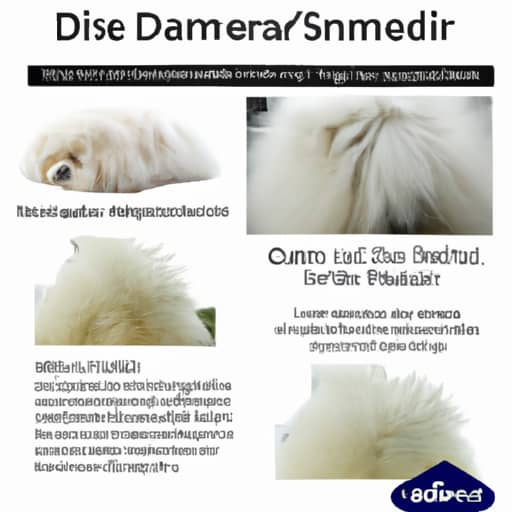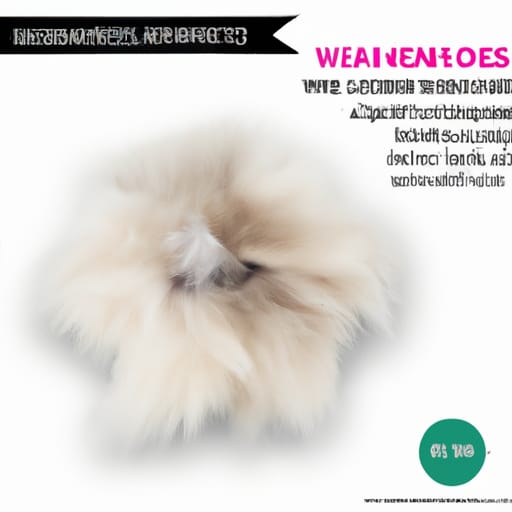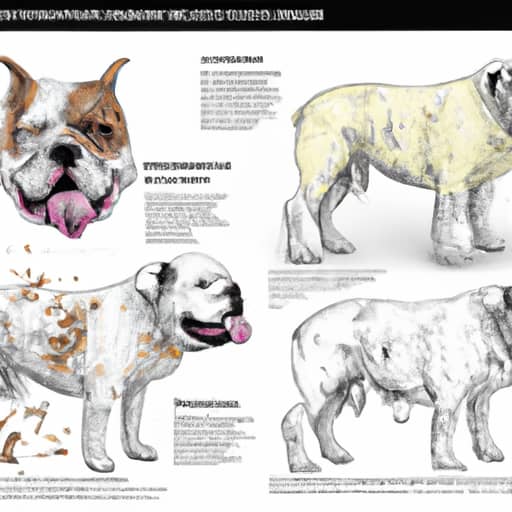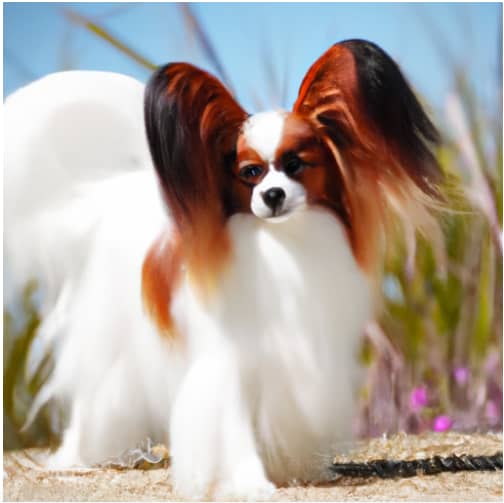Samoyed Shedding: Why Do Samoyed Shed?
Do Samoyed Shed? If you are a proud owner of a Samoyed or considering getting one, you may have wondered why these beautiful dogs have a tendency to shed. In this article, we will explore the fascinating world of Samoyed shedding and uncover the reasons behind this furry phenomenon. Discover the factors that contribute to their shedding, useful tips on how to manage it, and learn to embrace the unique charm of these fluffy companions. Get ready to gain a deeper understanding of Samoyed shedding and find ways to keep your home free from excessive fur.
Causes of Shedding
Genetics
One of the main causes of shedding in Samoyeds is genetic factors. The breed is known for its double coat, which consists of a dense undercoat and a longer, coarser outer coat. This genetic trait makes Samoyeds prone to heavy shedding. If your Samoyed’s parents or littermates shed a lot, it is likely that your dog will also shed heavily.
Seasonal Changes
Samoyeds also shed due to seasonal changes. These dogs have adapted to living in cold climates, and their thick double coat helps keep them warm during winter. As the seasons change, Samoyeds shed their undercoat to prepare for warmer weather. This shedding, known as “blowing coat,” is a natural and necessary process for your Samoyed to regulate its body temperature.
Poor Diet
A poor diet can also contribute to excessive shedding in Samoyeds. If your dog is not getting the necessary nutrients, vitamins, and minerals, its coat may become dry, brittle, and prone to shedding. It is important to provide a balanced and high-quality diet to your Samoyed to ensure a healthy coat and minimize shedding.
Stress and Anxiety
Stress and anxiety can affect your Samoyed’s shedding patterns. Just like humans, dogs can experience stress due to various factors, such as changes in their environment, separation anxiety, or fear. This stress can lead to excessive shedding. It is important to create a stress-free and comfortable environment for your Samoyed to help minimize shedding caused by stress and anxiety.
Shedding Patterns
Year-round Shedding
Samoyeds are known for shedding year-round, although the shedding may vary in intensity. Even though they blow their coat during seasonal changes, they still shed throughout the year. Regular grooming and maintenance are necessary to keep the shedding under control.
Blowing Coat
The blowing coat phase is when your Samoyed sheds its undercoat to prepare for warmer weather. This shedding usually occurs twice a year, in spring and fall. During this time, your Samoyed will shed large amounts of hair, and you may find clumps of fur all over your house. It is important to have a proper grooming routine during this period to help remove the loose and dead hair and prevent matting.
Puppy Shedding
Puppies also go through a shedding phase as they grow and develop their adult coat. This shedding is usually not as extreme as blowing coat, but you may notice some hair loss as your puppy’s adult coat starts to come in. Regular grooming and proper nutrition are important during this stage to support healthy coat growth and minimize shedding.

Methods to Control Shedding
Regular Brushing
Regular brushing is the most effective method to control shedding in Samoyeds. Brushing your dog’s coat at least once or twice a week helps remove loose and dead hair, preventing it from ending up all over your house. It also stimulates the skin and promotes blood circulation, keeping the coat healthy.
Bathing and Conditioning
Regular bathing is another crucial element of controlling shedding. Use a high-quality, dog-specific shampoo and conditioner to keep your Samoyed’s coat clean and moisturized. This helps prevent dryness and brittleness, reducing shedding. However, it is important not to overdo bathing, as excessive bathing can strip the coat of its natural oils and lead to more shedding.
Proper Nutrition
A proper diet is essential for maintaining a healthy coat and minimizing shedding. Make sure to feed your Samoyed high-quality dog food that is rich in essential nutrients, vitamins, and fatty acids. These nutrients nourish the skin and coat, promoting healthy hair growth and reducing shedding.
Supplements and Treatments
In addition to a balanced diet, there are also supplements and treatments available that can help control shedding in Samoyeds. Omega-3 fatty acid supplements, such as fish oil, can improve coat quality and reduce shedding. Consult with your veterinarian to determine the appropriate supplements and treatments for your Samoyed’s shedding needs.
Common Misconceptions
Samoyeds Don’t Shed
Contrary to popular belief, Samoyeds do shed. While it is true that their double coat helps contain the shedding, they still shed regularly and blow their coat twice a year. It is important for potential Samoyed owners to be aware of this shedding trait and be prepared to dedicate time and effort to grooming and maintenance.
Samoyeds are Hypoallergenic
Another common misconception is that Samoyeds are hypoallergenic dogs. This is not entirely true. While Samoyeds produce fewer allergenic substances, such as dander, compared to other breeds, they are not completely hypoallergenic. People with allergies should spend time with a Samoyed before bringing one into their home to ensure they are not sensitive to the breed.

Importance of Shedding
Natural Cooling Mechanism
Shedding is a natural cooling mechanism for Samoyeds. The double coat helps regulate their body temperature by trapping air close to the skin and insulating them in cold weather. Shedding the undercoat allows air to circulate more easily and prevents overheating in warmer weather.
Removing Dead Hair
Shedding is an important process for removing dead and damaged hair from your Samoyed’s coat. Regular brushing and grooming help remove this dead hair, preventing it from matting and causing discomfort to your dog. It also promotes the growth of healthy new hair for a lustrous and shiny coat.
Keeping the Coat Healthy
Shedding is crucial for maintaining a healthy coat in Samoyeds. Removing dead hair and stimulating the skin through brushing promotes blood circulation, which contributes to a healthy coat. It also allows you to monitor the condition of your Samoyed’s skin and detect any potential skin issues early on.
Grooming Tips
Choosing the Right Brush
Choosing the right brush is essential for effective grooming and shedding control. For Samoyeds, a combination of an undercoat rake and a slicker brush is recommended. The undercoat rake helps remove the loose undercoat during shedding periods, while the slicker brush helps control shedding and keeps the topcoat clean and tangle-free.
Techniques for Brushing
When brushing your Samoyed’s coat, start with the undercoat rake to remove loose undercoat hair. Work in the direction of hair growth and be gentle to avoid causing any discomfort to your dog. Once you have removed the loose undercoat, use the slicker brush to remove any remaining loose hair, tangles, or mats from the topcoat. Be thorough but gentle, and pay extra attention to areas prone to matting, such as behind the ears and under the armpits.
Dealing with Mats and Tangles
Mats and tangles can occur, especially during shedding periods. It is important to address them promptly to prevent discomfort and potential skin issues. Use a dematting tool or a pair of grooming scissors to carefully remove mats and tangles. Be cautious not to pull or cut your Samoyed’s skin, and always seek professional help if you are unsure or if the matting is severe.
Seasonal Coat Care
Preparing for the Spring Shed
As spring approaches, it is essential to prepare your Samoyed’s coat for the blowing coat phase. Increase the frequency of brushing sessions to remove the loose undercoat as it starts to shed. This will help prevent excessive shedding and matting during the shedding period. Consider visiting a professional groomer if you need assistance in managing your Samoyed’s coat during this time.
Preventing Matted Fur in Winter
During winter, when your Samoyed’s coat is at its fullest, it is important to prevent matting and tangles. Regular brushing is key to removing loose hair and preventing it from matting. Pay attention to areas where snow or moisture can accumulate, such as the belly and paws, and ensure they are thoroughly dried to minimize tangling and matting.
Health Factors
Skin Conditions
Certain skin conditions can contribute to excessive shedding in Samoyeds. Allergies, dermatitis, or fungal infections can lead to hair loss and shedding. If you notice any changes in your dog’s skin or coat, such as redness, itching, or flaking, consult with your veterinarian to identify and address any underlying skin issues that may be causing shedding.
Allergies
Both environmental and food allergies can contribute to shedding in Samoyeds. Allergies can cause skin inflammation, itching, and excessive shedding. If you suspect that your Samoyed has allergies, consult with your veterinarian to identify the allergen and develop a treatment plan to relieve symptoms and minimize shedding.
Shedding vs. Undercoat Care
Understanding the Difference
Shedding and undercoat care are often misunderstood. Shedding refers to the natural process of your Samoyed losing its hair, while undercoat care involves maintaining and managing the dense undercoat. While shedding can be controlled through grooming, undercoat care requires specific techniques and tools to keep the undercoat healthy and prevent matting.
Maintaining the Undercoat
To maintain the undercoat, regular brushing using an undercoat rake is essential. This helps remove loose undercoat hair and prevents matting. Avoid shaving or cutting the undercoat, as it serves an important purpose in regulating body temperature. Consulting with a professional groomer experienced in Samoyeds can provide valuable guidance on undercoat care techniques.
Conclusion
Shedding is a natural and necessary process for Samoyeds. Understanding the causes, shedding patterns, and how to control shedding is essential for keeping your Samoyed’s coat healthy and managing the amount of loose hair in your home. Regular grooming, proper nutrition, and addressing any health factors or allergies can help minimize shedding and keep your Samoyed looking and feeling their best. Embrace the shedding process as a part of being a proud Samoyed owner and enjoy the affectionate and lovable personality of these beautiful dogs.











